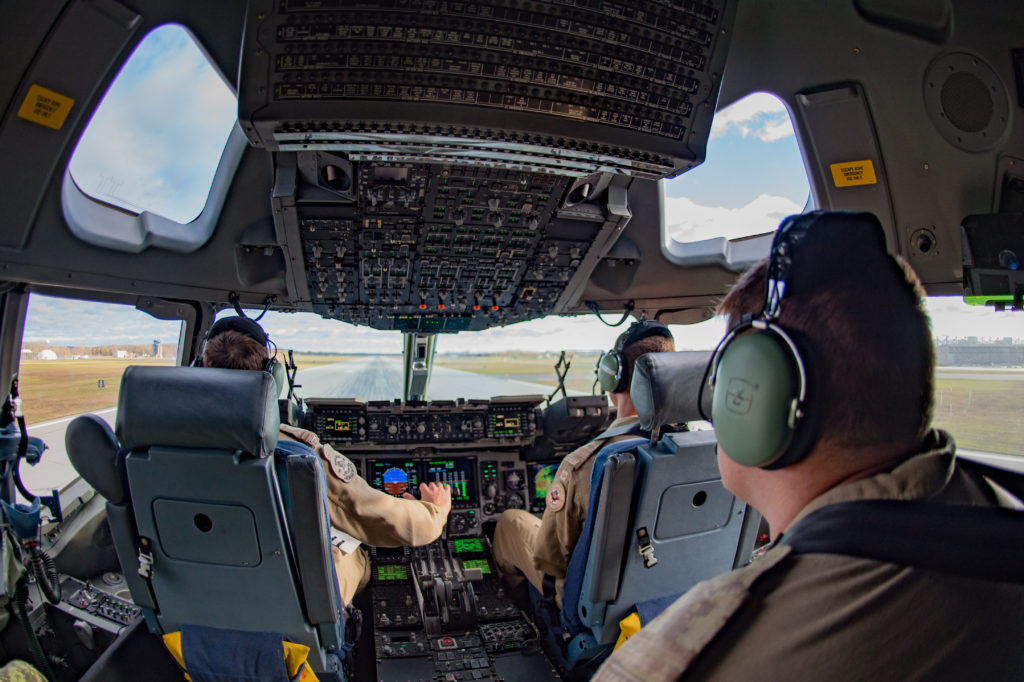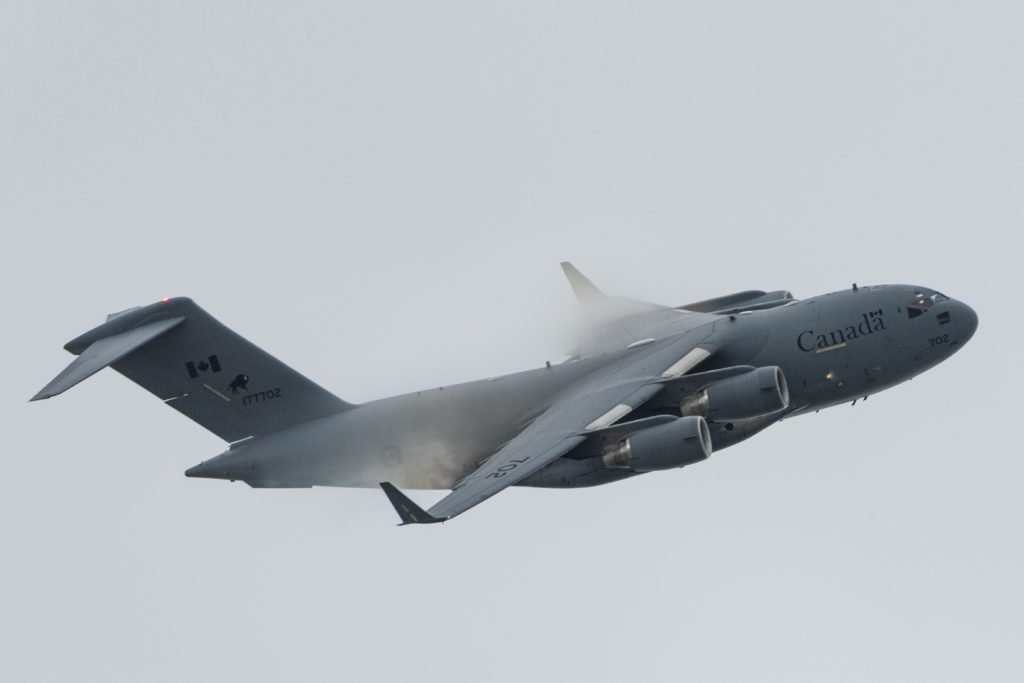Estimated reading time 9 minutes, 2 seconds.
Earlier this year, the C-17 Globemaster III global fleet surpassed four million flying hours, a notable marker for the long-range, heavy logistic transport aircraft that first entered service 30 years ago.
While the Royal Canadian Air Force (RCAF) fleet of five CC-177s comprise a small portion of the 275 airframes operated by nine nations, they have compiled almost 50,000 flight hours of the total since the first four were acquired in 2007.
The strategic airlifter was procured in response to urgent operational needs during the height of the mission in Afghanistan. Designed to land and take off from short and austere runways, it was billed as a critical capability to transport troops, cargo and large combat equipment, from CH-146 Griffon helicopters to the Leopard 2 main battle tank.

“The CC-177 fleet is involved in a number of ongoing operations and training, and continues to conduct mission sustainment flights,” an RCAF spokesperson said in statement.
Over the past 18 months, the five aircraft operated by 429 Transport Squadron at 8 Wing Trenton, Ontario, have maintained a high operational tempo, despite some flying limitations imposed by the global pandemic. Among other tasks, the CC-177s have transported Griffons to and from British Columbia in support of a training exercise; distributed more than 82,000 kilograms of COVID-19 supplies across Central America and the Caribbean as part of Operation Globe; and ferried Australian F/A-18A Hornets to 4 Wing Cold Lake, Alberta, to begin conversion to Canadian operating standards — as part of an RCAF program to fill an interim gap in its fighter jet capability.
The RCAF has also acquired and already put to use a containerized aeromedical bio-containment evacuation system to safely transport infected patients.
The Boeing-built CC-177, powered by four Pratt & Whitney F117-PW-100 engines, is expected to be flying for Canada well into the 2040s; U.S. Air Force Air Mobility Command (AMC) is forecasting a service life for some of its 222 aircraft until perhaps even the 2050s.
The airframe, however, is continuously being evaluated and enhanced.
When Canada acquired four Globemaster III’s in 2007 through a foreign military sale with the U.S. government, it became part of the global C-17 Virtual Fleet (VF) in-service support (ISS) framework that ensures ready access to a pool of spare parts and standardized processes for maintenance and upgrade procedures on a common aircraft configuration.
“Through the current agreement and the planned future ISS, the U.S. government’s C-17 Program Office provides significant resources that are integrated with Boeing as a team,” an RCAF spokesperson explained. “They provide overall program management, supply chain management, sustaining engineering, depot level aircraft maintenance and modifications, and field services support.”

That includes placing Boeing technical and logistics personnel at 429 Squadron in Trenton.
“Boeing and the U.S. Air Force facilities are also readily equipped to carry out the necessary heavy maintenance checks – each taking about four months to complete,” the spokesperson added. “Approximately 50 of these maintenance checks are performed per year at two facilities to support all of the VF partners.”
As with the rest of the global C-17 fleet, all five RCAF CC-177s underwent the Block 21 upgrade in 2020. The primary enhancement was to the aircraft’s navigation system. Under incoming Federal Aviation Administration and European regulations for aircraft in controlled airspace, the fleet received the Automatic Dependent Surveillance-Broadcast Out (ADS-B Out) transponder system as part of its Identify Friend or Foe (IFF) system.
Over the next seven years, the RCAF will also modify or replace several systems. First up will be a modernized head-up display (HUD), the primary flight display which provides basic flight instrumentation for aircraft guidance and flight control.
“The HUD permits the pilot to maintain visual contact outside the aircraft while viewing images of the flight instruments on the combiner. A combiner consists of two optically coated, transparent glass panes, which allow outside images to pass through them and reflect the projected instrument images toward the pilot,” the spokesperson said. “We expect to modify one aircraft per year beginning in 2022, and finishing in 2028.”
Beginning in 2023, the RCAF will upgrade beyond-line-of-sight communications systems, including radios, antenna, and other equipment. Modifications will include transitioning to another satellite constellation as the Inmarsat I-3 communication satellites reach the end of their service lives. At the same time, the CC-177 will add the ability to receive commercial satellite services, higher bandwidth connectivity for command and control, and secure voice/data/video for when specialized users or senior leaders are flying in the aircraft. The RCAF will also enhanced the airplane’s communications coverage in polar regions.
The upgrades will include replacement of legacy ARC-210 radios with the latest-generation radios, including anti-jam tactical UHF radios, and the replacement of existing crypto devices.
Starting in 2025, the CC-177 will also receive improved defensive capabilities for operations in combat zones with a new Large Aircraft Infrared Countermeasures System (LAIRCM) to protect the Globemaster III from heat-seeking aircraft-launched and surface-to-air missiles.

The LAIRCM can also “detect when the aircraft is targeted by lasers of specific characteristics,” the spokesperson added. “We will be phasing out the legacy system and upgrading the components to enhance capability, increase reliability, and adjust to evolving threats.”
Looking beyond the strategic airlift role, Air Mobility Command has begun to explore how the C-17 might contribute more directly to the fight. In an Advanced Battle Management System demonstration in 2020, the U.S. Air Force showed that a C-17 can drop Joint-Air-to-Surface Standoff Missiles with a roll-on pallet. AMC also plans to demonstrate launching small, unmanned aircraft.
“Why wouldn’t we change the calculus by doing different things, moving away from the antiquated view that AMC just brings stuff when they’re called?” Gen Jacqueline Van Ovost, AMC commander, told Air Force Magazine in April.








